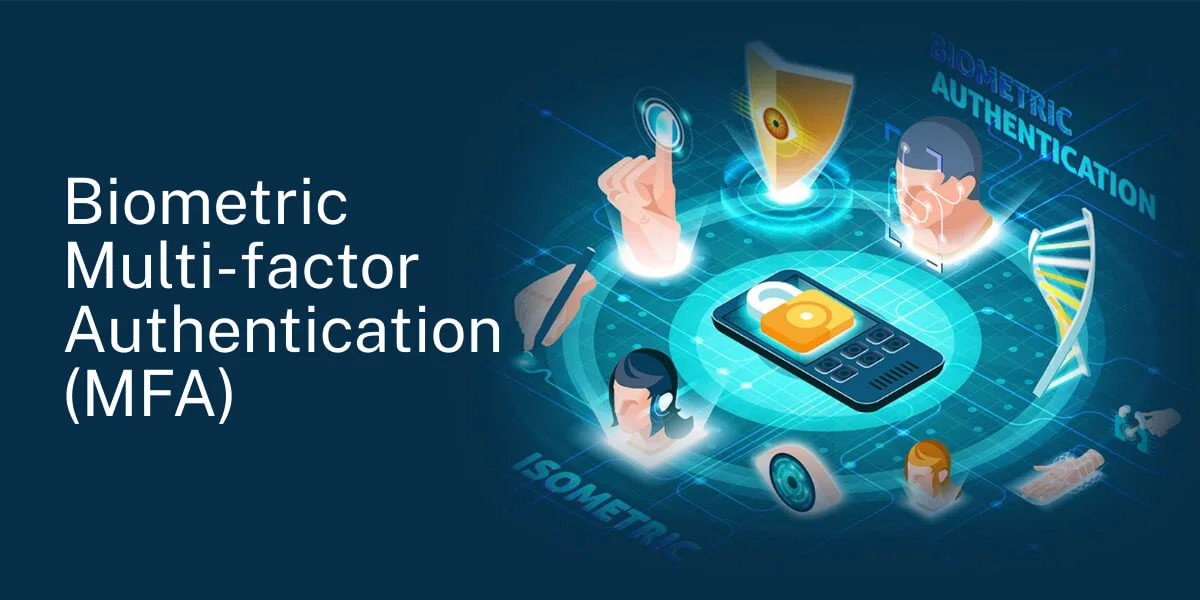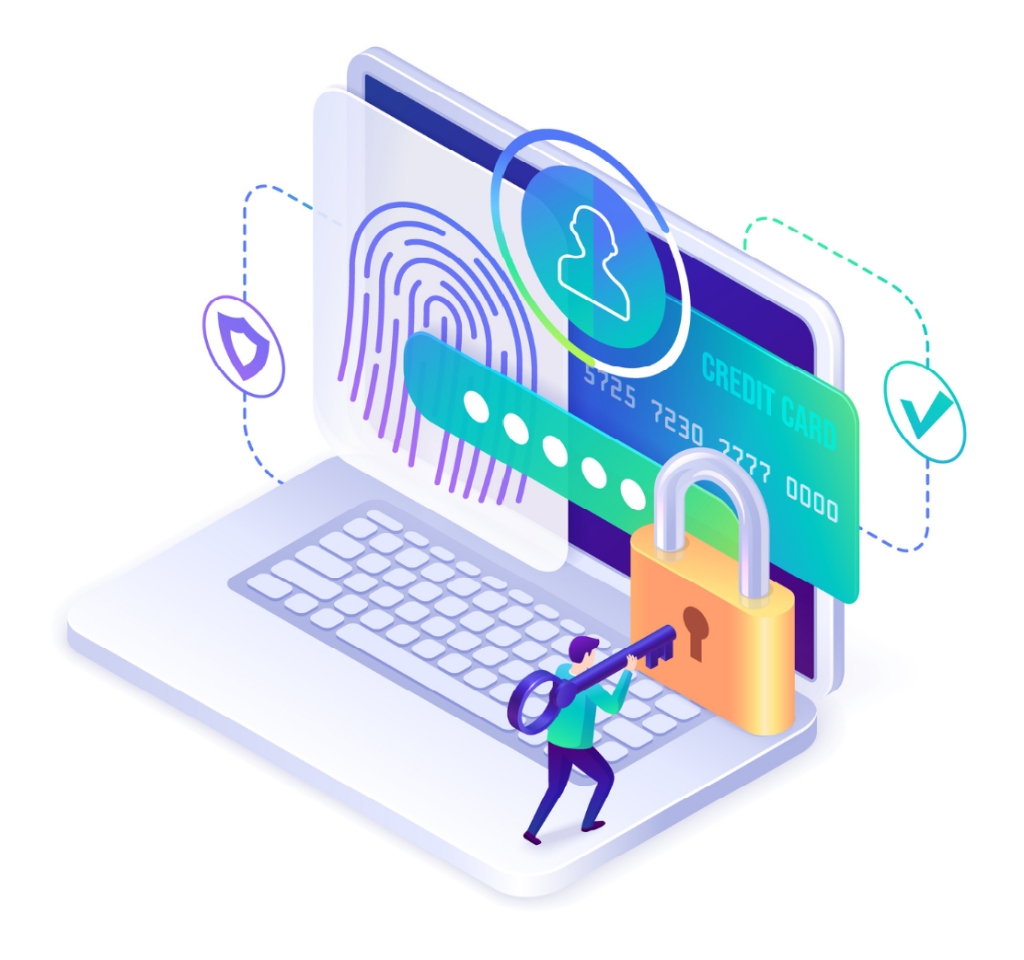
“Biometric Multifactor Authentication (MFA) is a method of authenticating an individual’s identity using two or more factors and authorizing for secure login, transaction or access.“
“Data is the new Oil” is an established fact in today’s fast-paced, digital world. The obvious & logical consequence is that the protection of these enormous amounts of data, the most valuable asset for any individual, business, or government, has become indispensable.
Moreover, in today’s era of digitization, mobile devices & web has become ubiquitous mediums for each of us to avail of various services & conducting transactions in multiple forms – most of them are sensitive in nature, requiring authentication of the user’s identity to authorize these transactions or deliver verified services. Especially, post-pandemic, the requirement of the remote mode of service availing has become more predominant.
The Evolution of Multi-factor Authentication in Biometrics
With the surging volume of online remote transactions & in view of the increasingly sensitive nature of mobile transactions, and overall, due to the advent of more sophisticated methods of hacking, fraud & data theft in the online world, the traditional data protection & authentication/authorization mechanisms like Password, PIN, OTP, etc. have become inadequate. Data breaches in only the first half of 2021 have exposed over 18.8 billion records and these, in turn, give rise to Identity Theft, bringing significant financial & security risks for individuals, businesses & governments.

The scale of fraud and breaches in the modern-day world is shocking. In 2020 alone, according to the US Federal Trade Commission CSN report, 1.4 million cases of identity thefts were reported in the US, a 29% surge compared to 2019, predominantly on account of the post-pandemic consumer behavior shift to increased digital adoption. Total losses due to identity fraud were estimated to be a humongous USD 43 billion in 2020, in the Javelin Strategy report.
Biometrics: An increasingly popular mode for Identity Authentication
Biometric authentication, over the years, has become one of the proven & reliable methods to combat identity theft. As a technology innovation domain, biometrics has matured from fingerprint to voice print to face recognition and then into many other factors like eye recognition, palm recognition, etc., especially in conjunction with Artificial Intelligence and deep learning – But is the current format of biometric identity authentication through mobile devices robust? Does only a selfie check assure a 100% guarantee in any transaction – the answer is negative.
Single-factor Biometric authentication always leaves some possibility of error & tampering, because of unavoidable environmental factors or, system inaccuracy. This is where multifactor biometric authentication (MFBA) comes into relevance. Multifactor Biometrics add additional layers of authentications to make the system accurate, robust & tamperproof. Moreover, the use of AI makes the biometric engines even smarter – the AI assesses and weighs individual factors about the login attempt to come up with a risk score for the scenario.
On top of classical biometrics, newer progress has happened in the area of behavioral biometrics & soft biometrics too such as, key-stroke patterns, typing styles, gait patterns, and many more & combining AI with Biometrics to make it more efficient. But these individual authentication factors standalone are still unable to guarantee 100% accurate identification & hence Multi-Factor Biometrics is key for the widespread adoption of Biometrics in real-world use case scenarios.
The three most common types of identity theft are financial, medical, and online. These can have a major impact on individual users’ safety, national security & businesses’ performance, reputation, and bottom line. In March 2021, during a survey with Microsoft engineers, it was estimated that 99.9% of the account compromise incidents they deal with could have been blocked by a biometric multifactor authentication (MFA) solution.
Key Challenges in Multi-Factor Authentication in Biometrics
The main barrier to the widespread adoption of biometric multi-factor authentication is the cost & deployment. Traditionally biometric solutions have always been dependent on specialized hardware and highly CAPEX intensive. To have MFA, businesses are required to deploy multiple types of devices (Face scanner, Eye scanner, Palm scanner, etc.) at each transaction point– it is simply an impossible task & a non-viable business case scenario.
One other problem in the adoption of Multi-factor biometrics in today’s SaaS-driven world is that the biometrics sensor available to consumers on their smartphone platform is only for Faces or sometimes for Fingerprints and that too is not fully commercial-grade biometrics. Hence, a comprehensive platform for smartphones supporting truly multi-factor biometrics is a critical need of the hour.
Multifactor Biometrics on Mobile Platform – A Futuristic Technology Field
Multifactor biometric authentication on mobile makes it extremely useful for consumers as well as for enterprise users in the current trend of increasingly working out of the office, remote online shopping, contactless banking/trading & multiple other day-to-day scenarios. It is one of the key pillars for assuring a fraud-free & verified business environment, as well as guaranteeing an enhanced User Experience, in most consumer markets, gig economies, and sectors such as banking, insurance, trading, etc.
For example, you are sending money to someone using a mobile banking app. In today’s scenario, you will receive an OTP & can complete the transaction successfully. However, this does not guarantee whether it was you, who was actually doing the transaction.
Any person in possession of your mobile can do this easily. Even with the increasing trend of hacking, fraudsters are taking control of your mobile remotely & doing the transactions on your behalf. Hence, it is mandatory to verify the User’s real identity, not just the device or, network verification. Multi-factor Biometrics can do that with a 100% guarantee – it gives the randomized challenge to users to authenticate their identity through their own biometrics.

Multifactor Authentication (MFA) can also be used to authenticate citizens in various other scenarios – such as, in border crossing & immigration, for hospitals to confirm the patient’s identity and access to the right medical information, seamless onboarding & content consumption in e-learning or OTT platform, smooth check-in processes in travel or hospitality industry, workforce & visitor management for corporates and many more. Multifactor biometric solutions can be a key for governments & businesses to ensure that users’ data does not get compromised.
There are multiple additional advantages to using Multi-factor biometrics apart from the obvious fact that Multi-factor ensures enhanced security & system accuracy. Single-factor of biometrics may not always be useful, in terms of real use case scenarios.
For example, if only a fingerprint-based solution is implemented somewhere, it would be a big challenge for the laborers, farmers, and miners, whose hands are scarred & bruised and whose fingerprints are faded due to hard work. Multifactor Biometrics provides a wide range of applicability in any use case.
BIOCUBE’s Unique Multi-Factor Biometric-based Identity Platform
Biocube has built the world’s most unique, proprietary (patent) Biometric multifactor, multimodal authentication platform available on smartphones, and a whole range of other devices ranging from Tablets, Laptops, and IP Cameras, thus reducing the cost of technology adoption and ensuring user convenience & security with assured RoI.
For further info please visit – www.biocube.ai or, feel free to drop us an email at connect@biocube.ai. We would be happy to assist you.
